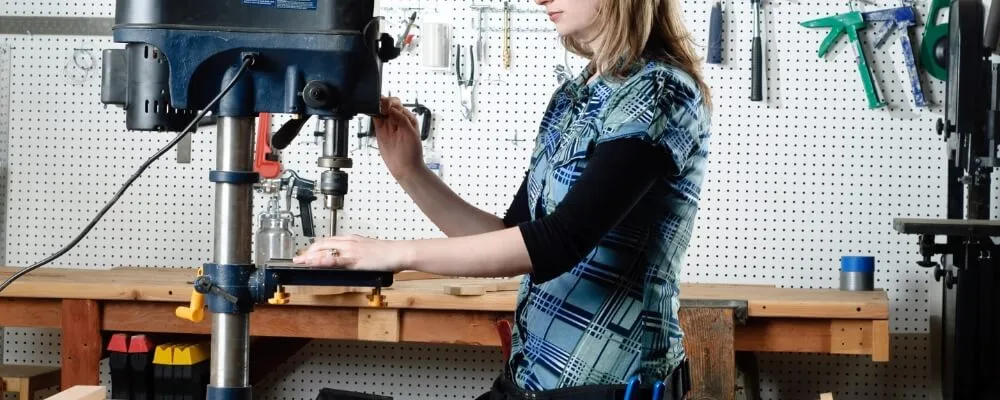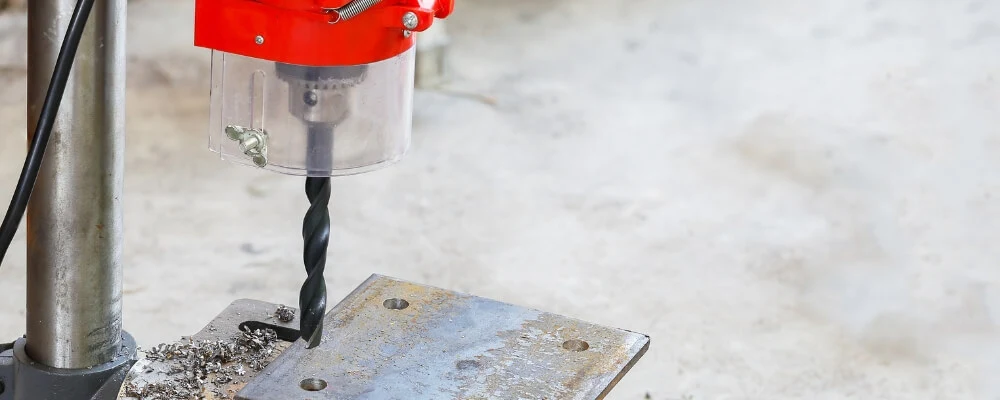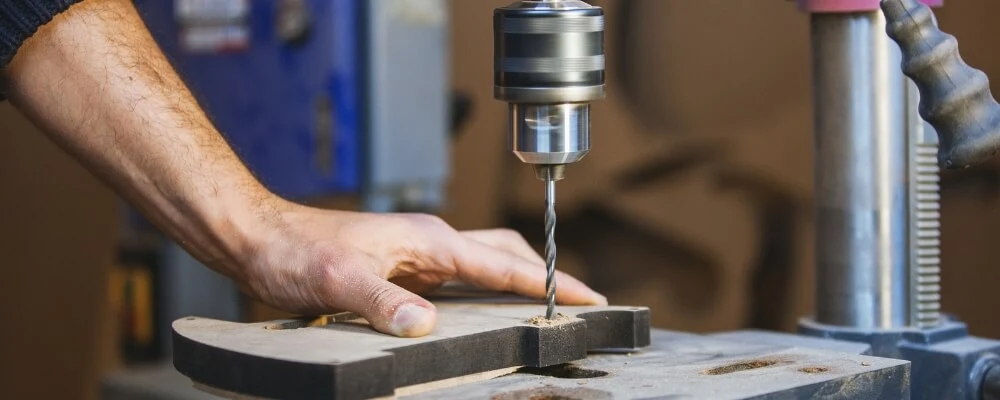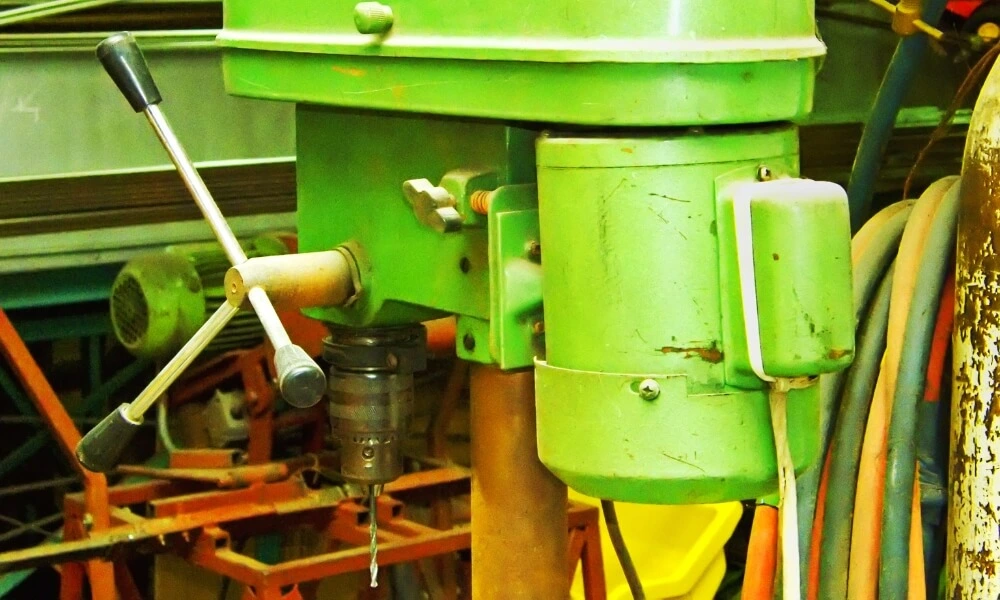A drill press, while being an indispensable tool in the workshop, brings with it potential hazards that necessitate strict adherence to safety protocols. This powerful machine, used for drilling holes in materials with precision and ease, demands respect and awareness from its operators to prevent accidents and ensure a safe working environment.
Whether you are a seasoned professional, a hobbyist, or a beginner venturing into the world of craftsmanship, being acquainted with and diligently following safety rules is paramount. In this blog, we will delve into the 10 crucial drill press safety rules that everyone should know and implement. These rules encompass a range of safety measures, including the use of personal protective equipment, proper machine handling, and maintaining focus during operation.
By adhering to these essential guidelines, users can mitigate risks and enjoy a seamless, safe, and productive drilling experience. So, let’s embark on this journey of fostering safety and responsibility in the workshop by exploring these vital safety rules.
Hazard Associated With Drill Press
A drill press, while a valuable tool, can pose several hazards if not used correctly. Here are some of the hazards associated with a drill press:
- Entanglement Hazard: Loose clothing, hair, or jewelry can become entangled in the rotating parts of the drill press, leading to severe injuries.
- Flying Debris: The drilling process can produce flying chips, fragments, or broken drill bits that can cause eye injuries or other harm.
- Contact with Moving Parts: Hands or fingers can come into contact with the drill bit or other moving parts, leading to cuts, abrasions, or more severe injuries.
- Noise Hazard: Prolonged exposure to the noise produced by a drill press can lead to hearing loss or damage.
- Ejection Hazard: Unsecured workpieces or broken drill bits can be ejected from the machine at high speed, posing a risk to the operator and bystanders.
- Electric Shock: Faulty wiring, improper grounding, or handling the machine with wet hands can lead to electric shocks.
- Overexertion and Repetitive Stress: Prolonged use or application of excessive force can lead to musculoskeletal disorders, strains, or sprains.
- Tripping Hazard: Cluttered work areas and power cords can pose tripping hazards, leading to falls and injuries.
- Chemical Exposure: Exposure to cutting fluids, lubricants, or the material being drilled can lead to skin irritations or respiratory issues.
- Inadequate Lighting: Poorly lit work areas can lead to mistakes and accidents due to reduced visibility.
- Incorrect Speed Setting: Using incorrect speed settings for the material can lead to loss of control, breakage, and accidents.
- Lack of Training: Inadequate knowledge or training on the operation of the drill press can result in improper use and accidents.
By being aware of these hazards and following proper safety procedures, users can minimize the risks associated with operating a drill press.
10 Crucial Drill Press Safety Rules Everyone Should Know
Using a drill press can be dangerous if not handled with care and proper safety measures. Here are ten crucial safety rules everyone should know when operating a drill press:

1. Read the Manual
Before operating the drill press, it is crucial to read the user manual thoroughly. The manual provides specific information about the machine, including its operations, features, and safety precautions.
Familiarizing oneself with the manual ensures that the user understands how to operate the machine correctly and safely, preventing mishaps due to ignorance or misunderstanding of the machine’s functions. It also helps the user in identifying the various components of the drill press and understanding their purpose, enabling more efficient and safe usage of the equipment.
2. Wear Appropriate Personal Protective Equipment (PPE)
Wearing appropriate Personal Protective Equipment is essential when operating a drill press. Safety glasses or goggles are crucial to shield the eyes from flying debris and particles that could cause injury. Ear protection is also important as it minimizes exposure to the high noise levels produced by the machine, preventing potential hearing damage.
Additionally, it is vital to avoid wearing loose clothing, jewelry, or having long hair that is not tied back, as these can get entangled in the machine, leading to severe injuries. Wearing the right PPE ensures a safer working environment and reduces the risk of accidents.
3. Secure Workpieces
Securing workpieces properly to the table is a fundamental safety step when using a drill press. If a workpiece is not clamped securely, it can spin, kick back, or shift during drilling, posing a significant risk to the operator.
A securely clamped workpiece ensures stability and precision during the drilling process, preventing any sudden movements that could lead to accidents. This practice is essential for maintaining control over the workpiece and the overall drilling operation, ensuring the safety of the user and the integrity of the workpiece.
4. Check for Damages
Before using the drill press, conducting a thorough inspection of the machine for any damages or malfunctions is imperative. Any damaged or malfunctioning part can compromise the safety and functionality of the machine, leading to potential accidents. If any part is found to be damaged or not working correctly, the machine should not be used until the necessary repairs or replacements have been made.
Regular inspection and maintenance of the drill press are crucial for ensuring its safe and optimal performance, preventing unforeseen breakdowns and hazards during operation.

5. Use Sharp Drill Bits
Using sharp drill bits is another critical safety measure when operating a drill press. Dull or damaged bits can cause the workpiece to spin out of control or can break during operation, creating a hazardous situation. Sharp drill bits allow for smooth and efficient drilling, reducing the amount of force and pressure needed, which in turn minimizes the risk of the workpiece moving or the bit breaking.
Regularly checking the sharpness of the drill bits and replacing or sharpening them as needed is essential for maintaining safety and achieving precise and accurate drilling results.
6. Set Speed Appropriately
Adjusting the speed of the drill press appropriately is crucial for safe and effective operation. The speed should be set according to the material being drilled and the size of the drill bit. Different materials require different speeds to avoid overheating and to ensure precise drilling.
For instance, harder materials typically require a slower speed, while softer materials can be drilled at higher speeds. Using the correct speed helps in preventing damage to the drill bit and the workpiece and reduces the risk of accidents due to loss of control or breakage.
7. Keep Work Area Clean and Well-Lit
Maintaining a clean and well-lit work area is essential for operating a drill press safely. A clutter-free environment prevents tripping hazards and allows for unobstructed movement around the machine. It also ensures that all tools and materials are organized and easily accessible, reducing the risk of mistakes and accidents.
Adequate lighting is equally important as it enables the operator to see the workpiece and controls clearly, ensuring accurate drilling and preventing mishaps due to poor visibility. A well-maintained and illuminated workspace contributes to overall safety and efficiency during the drilling process.
8. Maintain a Safe Distance
While operating a drill press, it is vital to keep hands and fingers at a safe distance from the rotating parts and the drill bit. This practice prevents the risk of entanglement or contact with the moving parts, which can lead to severe injuries.
Additionally, operators should never reach under the table while the machine is running, as this can result in accidental contact with the drill bit or other moving parts. Maintaining a safe distance and being mindful of body placement during operation is key to avoiding injuries and ensuring safe use of the drill press.

9. Turn Off Power When Not in Use
Turning off and unplugging the drill press when making adjustments, changing bits, or when not in use is a fundamental safety practice. This precaution prevents the machine from accidentally starting, which could lead to injuries or damage to the machine and workpiece.
It is especially important to ensure that the power is off when changing drill bits or making any adjustments to avoid unintended activation of the machine. This practice not only safeguards the operator but also prolongs the life of the drill press by avoiding unnecessary wear and tear.
10. Stay Focused
Staying alert and focused is imperative while operating a drill press. Distractions can lead to mistakes and accidents, so it is important to give full attention to the task at hand. Operators should avoid using the machine when tired or under the influence of drugs or alcohol, as impaired judgment and reduced reaction times can significantly increase the risk of accidents.
Being mindful and maintaining concentration during the drilling process is essential for ensuring precision and safety, allowing the operator to respond quickly and effectively to any issues that may arise.
Conclusion
In conclusion, the operation of a drill press, while invaluable in achieving precision in drilling tasks, mandates a rigorous adherence to safety rules to avert potential hazards and mishaps. The outlined safety rules in this blog, ranging from meticulous reading of the manual to maintaining unwavering focus during operation, serve as fundamental pillars for ensuring a secure and accident-free working environment.
Whether you are a novice or a seasoned craftsman, incorporating these safety practices is non-negotiable. It is pivotal for safeguarding oneself and maintaining the longevity and efficiency of the equipment. By internalizing and implementing these crucial safety rules, operators can cultivate a culture of safety and responsibility in the workshop, allowing for enhanced productivity and peace of mind.
Remember, safety is not just about following rules but about creating a conscientious and proactive approach to one’s work, fostering a harmonious interaction between the operator and the machine.

